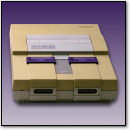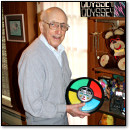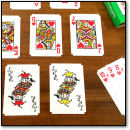Archive for 2006
Retro Scan of the Week: Nintendo Power Cyborg Attack!
Monday, August 14th, 2006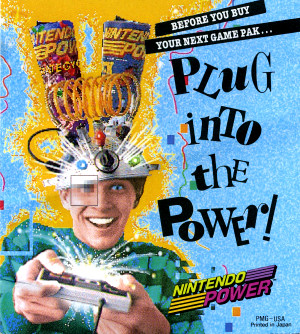
Man, how times have changed.
If you use this image on your site, please support “Retro Scan of the Week” by giving us obvious credit for the original scan and entry. Thanks.
MobyGames: “Adventure” the Best Game Genre of All Time?
Sunday, August 13th, 2006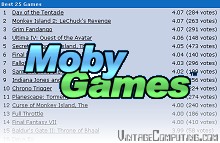 Just yesterday I was browsing through the wonderful video and computer game resource that is MobyGames.com, and I noticed something very peculiar. All of the top 25 most highly rated games of all time on MobyGames were adventure or RPG games, and many of them were just straight up adventure games. All of the RPGs on the list are typically considered “adventure/RPG games” — in other words, RPGs with strong adventure elements. Upon checking again earlier today, a lone exception — Super Mario Bros. — had creeped into 25th place (see screenshot to the side), and as of this writing, it’s risen to rank 22, so the list is fairly dynamic. Still, the clear dominance of adventure/RPGs remains.
Just yesterday I was browsing through the wonderful video and computer game resource that is MobyGames.com, and I noticed something very peculiar. All of the top 25 most highly rated games of all time on MobyGames were adventure or RPG games, and many of them were just straight up adventure games. All of the RPGs on the list are typically considered “adventure/RPG games” — in other words, RPGs with strong adventure elements. Upon checking again earlier today, a lone exception — Super Mario Bros. — had creeped into 25th place (see screenshot to the side), and as of this writing, it’s risen to rank 22, so the list is fairly dynamic. Still, the clear dominance of adventure/RPGs remains.
Conspicuously absent from the list are the usual game pundit “all time” favorites like Tetris, Super Metroid, Castlevania: SOTN, and Super Mario 64. Adventure, a genre that is supposedly “dead” in modern PC gaming, reigns supreme. So what gives?
[ Continue reading MobyGames: “Adventure” the Best Game Genre of All Time? » ]
PC World’s “25 Greatest PCs of All Time”
Friday, August 11th, 2006![]() You guys have probably figured out by now that I try to avoid “link dumps” and the like here on VC&G. But every once and a while something cool comes along that I have to share with you. In this case, it’s PC World’s list of the “25 Greatest PCs of All Time.”
You guys have probably figured out by now that I try to avoid “link dumps” and the like here on VC&G. But every once and a while something cool comes along that I have to share with you. In this case, it’s PC World’s list of the “25 Greatest PCs of All Time.”
The reason for the sneezin’ is the 25th anniversary of the release of the original IBM PC in 1981. However, PC World’s list is extra special because it covers all personal computers from every manufacturer and every era. It’s nice to read something in the mainstream computer press about old computers that isn’t full of misunderstandings, mistakes, and misinformation. PC World actually knows what they’re talking about in this case. And while the list (like any “Top # List”) is far from definitive, it’s still a fun read. So mosey on over to their site and check it out. After that, feel free to comment on what would be in your “top 25” list.
Alas…I possess only ten exact models of the top twenty-five personal computers of all time. I better get crackin’.
The Z88: Sir Clive’s Final Contribution
Thursday, August 10th, 2006![]() [ Please welcome our Greek ambassador of vintage computing, Gnome, to VC&G with his first contribution. ]
[ Please welcome our Greek ambassador of vintage computing, Gnome, to VC&G with his first contribution. ]
Having sold everything (including the right to use his own name) to Amstrad, Sir Clive Sinclair came up with a cunning plan. He would release his next computer under a new company (Cambridge Research) and call it something appropriately Sinclair-ish: Z88.
The Z88, besides being the last computer ever produced under the wise guidance of the Uncle himself, and despite featuring such Sinclair trademarks as a shoddy membrane keyboard and a Zilog Z80A CPU, was quite an interesting and quirky little machine. It also was (well, probably was) the first affordable portable computer — a full-fledged 8-bit laptop, actually, and the true forerunner to modern PDAs.
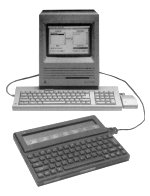 Running on just four AA batteries, the Z88 managed to provide its crisp built-in LCD display (made by Psion) with almost twenty hours of power. Imagine it: true mobile computing, all those years back, in distant 1987, for less than 200 pounds. Other than mobility, the machine featured a powerful spreadsheet / word-processor combo, a calculator, a calendar, file managers, a BBC-micro based BASIC, and a full pseudo-multitasking OS (called OZ) in its tiny ROM. It also had the ability to address up to 4MB of RAM, take ROM cartridges, and communicate with other (admittedly more powerful) computers through a standard RS-232 port.
Running on just four AA batteries, the Z88 managed to provide its crisp built-in LCD display (made by Psion) with almost twenty hours of power. Imagine it: true mobile computing, all those years back, in distant 1987, for less than 200 pounds. Other than mobility, the machine featured a powerful spreadsheet / word-processor combo, a calculator, a calendar, file managers, a BBC-micro based BASIC, and a full pseudo-multitasking OS (called OZ) in its tiny ROM. It also had the ability to address up to 4MB of RAM, take ROM cartridges, and communicate with other (admittedly more powerful) computers through a standard RS-232 port.
 The little beast even got a few games developed for its A4-sized self. Nothing spectacular, mind you, but Toad, ManicMiner, and Scrazble are still worth a look, even if it’s only an emulated one. To actually have said “look,” and for the full emulated pleasure, click here, install the appropriate software, place your PC on your lap, and listen to something from the Pet Shop Boys. It will be worth it, and you’ll be quite the spectacle too.
The little beast even got a few games developed for its A4-sized self. Nothing spectacular, mind you, but Toad, ManicMiner, and Scrazble are still worth a look, even if it’s only an emulated one. To actually have said “look,” and for the full emulated pleasure, click here, install the appropriate software, place your PC on your lap, and listen to something from the Pet Shop Boys. It will be worth it, and you’ll be quite the spectacle too.
A final note: Pixel Magazine (Issue 32, April 1987, seen above) was for years the premier Greek home computing magazine and sadly died along with the Amiga and the 16-bit era.
Old-School PC Copy Protection Schemes
Tuesday, August 8th, 2006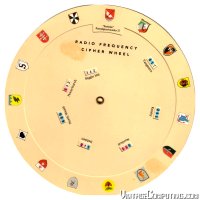 [This is Eric Lambert’s second submission to VC&G, with contributions and editing by RedWolf.]
[This is Eric Lambert’s second submission to VC&G, with contributions and editing by RedWolf.]
Nothing seems to make headlines more these days than war and copyright infractions. Whether it has to do with movies, music, or games, “piracy” is now a household word, and media providers are searching for ways to reduce it and make money off of it at the same time. Hollywood’s Broadcast Flag. Sony’s rootkit debacle. Starforce. So much time, effort, and public goodwill has been wasted on the quest to prevent people from copying things.
 All right. Did I scare off the casual passers-by yet? Because this isn’t a crusade to rail against the evils of modern copy-protection. No, I just needed a legitimate sounding opening to introduce what I really want to talk about: old-school copy protection. We’re talking “Don’t Copy That Floppy” here, folks — back in the days when men were men and boys had to learn how to handle boot floppies and extended memory.
All right. Did I scare off the casual passers-by yet? Because this isn’t a crusade to rail against the evils of modern copy-protection. No, I just needed a legitimate sounding opening to introduce what I really want to talk about: old-school copy protection. We’re talking “Don’t Copy That Floppy” here, folks — back in the days when men were men and boys had to learn how to handle boot floppies and extended memory.
 The early copy protection schemes were much more analog than digital, and tended to fall into two categories: code wheels and manual lookups. That’s right, they used documents and devices that were physically separate from the program. While the games themselves were easy to duplicate, copy protection (C.P.) implementations weren’t. Moving parts, dark-colored pages, esoteric information scattered throughout a manual all meant that photocopying (when possible) could be prohibitively expensive. And without a world-wide publicly available Internet, digital scans and brute-force cracking programs were almost unheard of. For the most part, the C.P. methods were an effective low-tech solution to a high-tech problem.
The early copy protection schemes were much more analog than digital, and tended to fall into two categories: code wheels and manual lookups. That’s right, they used documents and devices that were physically separate from the program. While the games themselves were easy to duplicate, copy protection (C.P.) implementations weren’t. Moving parts, dark-colored pages, esoteric information scattered throughout a manual all meant that photocopying (when possible) could be prohibitively expensive. And without a world-wide publicly available Internet, digital scans and brute-force cracking programs were almost unheard of. For the most part, the C.P. methods were an effective low-tech solution to a high-tech problem.
So let’s take a look at a couple of them and revel in their oh-so-simple glory.
[ Continue reading Old-School PC Copy Protection Schemes » ]
Retro Scan of the Week: Weller’s Psychedelic Apple II Painting
Monday, August 7th, 2006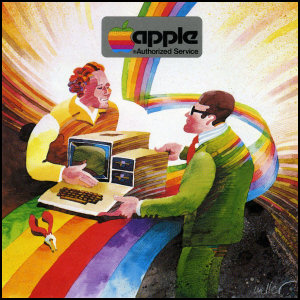
Great stuff. It reminds me of Peter Max.
If you use this image on your site, please support “Retro Scan of the Week” by giving us obvious credit for the original scan and entry. Thanks.
This Definitely Beats the “Mac Shelf”
Saturday, August 5th, 2006
I have the feeling that a Simunovich is behind this piece of techno-art. Devan, that is.
Prodigy Lives! Play MadMaze On the Web
Friday, August 4th, 2006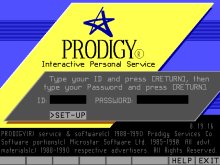 When I was but a wee lad, I begged my father to sign me up for Prodigy. I loved BBSes and wanted to try Prodigy so badly. On Christmas 1992, I finally got my wish: an orange cardboard box emblazoned with a blue star appeared under the Christmas tree. One hour (and one father’s credit card charge) later, I was online. Overall, I was mostly underwhelmed with the service and my subscription didn’t last long, but there was one thing I really liked about it: the games.
When I was but a wee lad, I begged my father to sign me up for Prodigy. I loved BBSes and wanted to try Prodigy so badly. On Christmas 1992, I finally got my wish: an orange cardboard box emblazoned with a blue star appeared under the Christmas tree. One hour (and one father’s credit card charge) later, I was online. Overall, I was mostly underwhelmed with the service and my subscription didn’t last long, but there was one thing I really liked about it: the games.
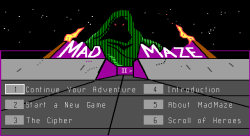 Many of you probably know of Prodigy, a pre-“popular Internet” era commercial dial-up online service that utilized copious amounts of NAPLPS graphics in its client interface. And one of the best applications of this rarely used, bandwidth- friendly graphics protocol was Eric Goldberg and Greg Costikyan‘s very popular Prodigy adventure game, MadMaze.
Many of you probably know of Prodigy, a pre-“popular Internet” era commercial dial-up online service that utilized copious amounts of NAPLPS graphics in its client interface. And one of the best applications of this rarely used, bandwidth- friendly graphics protocol was Eric Goldberg and Greg Costikyan‘s very popular Prodigy adventure game, MadMaze.
[ Continue reading Prodigy Lives! Play MadMaze On the Web » ]
This Week’s Game Ads A-Go-Go: “Bad Game Names to Blame”
Thursday, August 3rd, 2006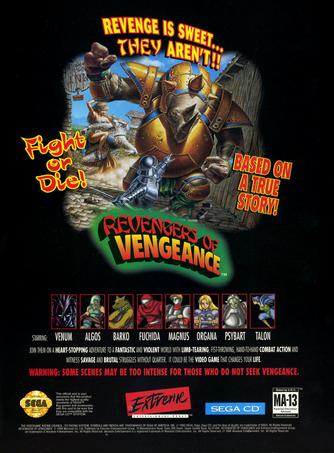
Check out the latest Game Ads A-Go-Go column here.



